The Ethereal Glass Façades of Steven Holl Architects
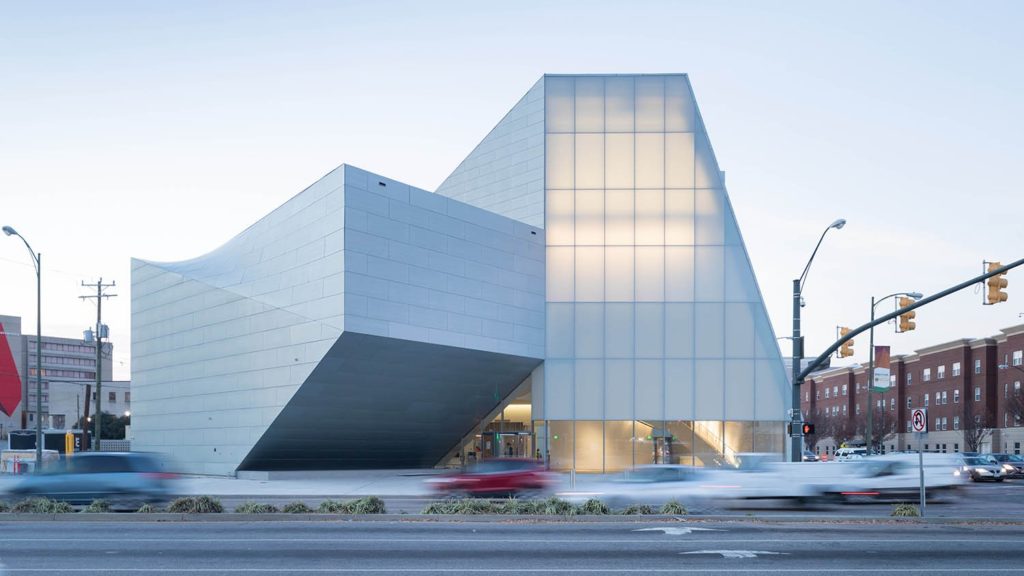
Find the perfect glazing for your next project through Architizer’s new community marketplace for building-products. Manufacturers: Check out the latest construction leads and sign up now.
When asked what his favorite material is, Steven Holl responds simply, “light.”
In their 40-plus years of practice, his firm, Steven Holl Architects, has gained a reputation as the masters of this immaterial material. They have devoted themselves to capturing light’s ephemeral qualities in their architecture, creating translucent glass façades that shift subtly throughout the day and illuminate their surroundings in the night.
The secret behind these glowing façades is twofold. First, the clarity of the glass is obscured with a textured finish, created by scarifying its surface with abrasives or acids. Second, the glass is insulated with semi-transparent fibers or plastic tubes, known as capillary slabs, which absorb light and disperse it more evenly through the glazing. Together, these strategies allow Steven Holl Architects to produce ethereal works of architecture that appear to be built of light. As you begin detailing curtain walls for your next project, be inspired by these poetic and sustainable glass façades.

Photos by Iwan Baan; via Steven Holl Architects.
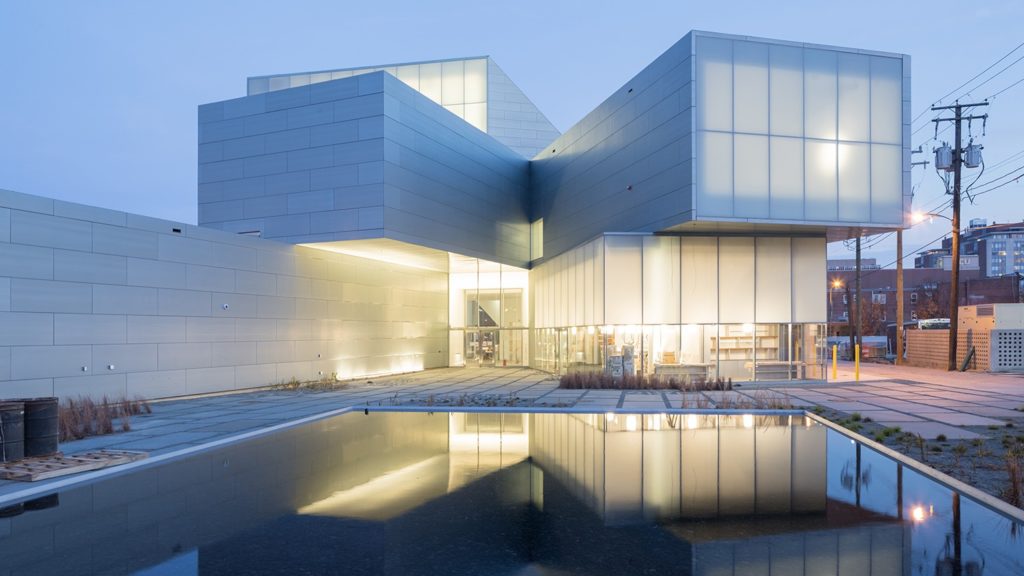
Institute for Contemporary Art, VCU by Steven Holl Architects, Richmond, Va., United States
Translucent glass by Okalux
Steven Holl Architects’ latest building is the Institute for Contemporary Art on the campus of Virginia Commonwealth University. Slated to open at the end of April, this project will host a fluid program of temporary exhibitions, performances, film screenings, lectures and public events. Like its ambitious program, the architecture of the Institute is in a state of constant flux.
On bright days, the building appears like a collection of metal sculptures with their titanium zinc cladding shimmering in the sunlight. On overcast days, the building becomes monolithic, its cladding suddenly indistinguishable from the acid etched glazing of its curtain walls. At night, these translucent walls are illuminated from within, transforming the building into a beacon of light visible from both the campus and the city.
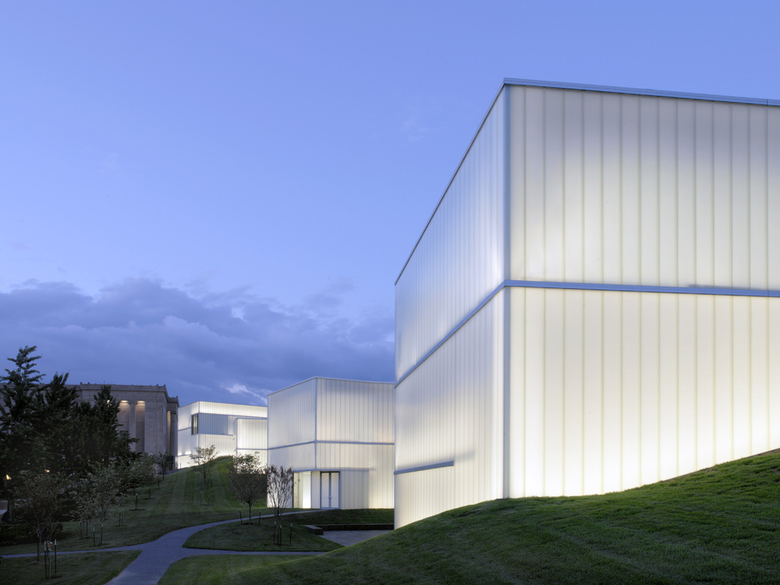
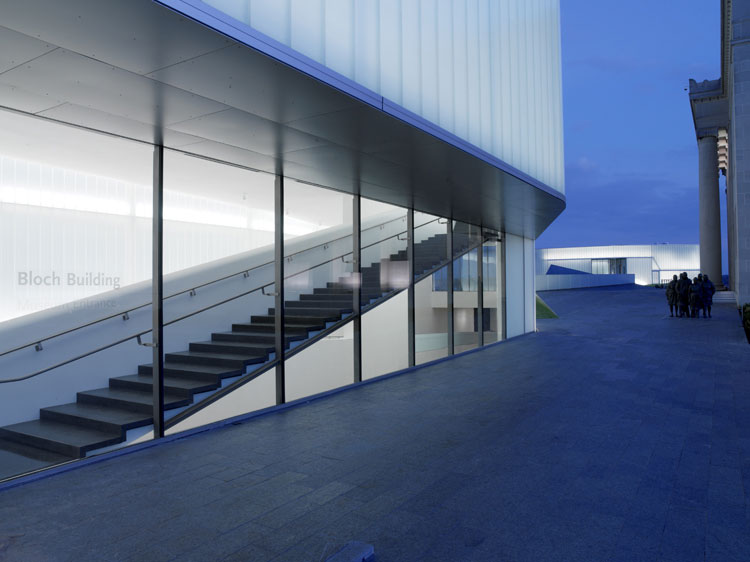
The Nelson-Atkins Museum of Art by Steven Holl Architects, Kansas City, Kans., United States
Translucent glass by Bendheim and Okalux
The expansion of the Nelson-Atkins Museum of Art required the addition of 165,000 square feet of gallery space without overshadowing the original, neoclassical museum. To achieve this, the architects designed a long building, embedded in the hillside, with five delicate glass structures that reach out into the landscape. As they explain, “the idea of complementary contrast, the Stone and the Feather, drove our design for the addition.”
These new façades, although minimalist, are actually a complex assembly comprising an outer layer of sandblasted channel glass, lined with capillary insulation, an inner layer of frosted safety glass, also lined with capillary insulation, and a pressurized air cavity separating the two. The interior of cavity is illuminated by white florescent tubes, giving the galleries their signature glow.
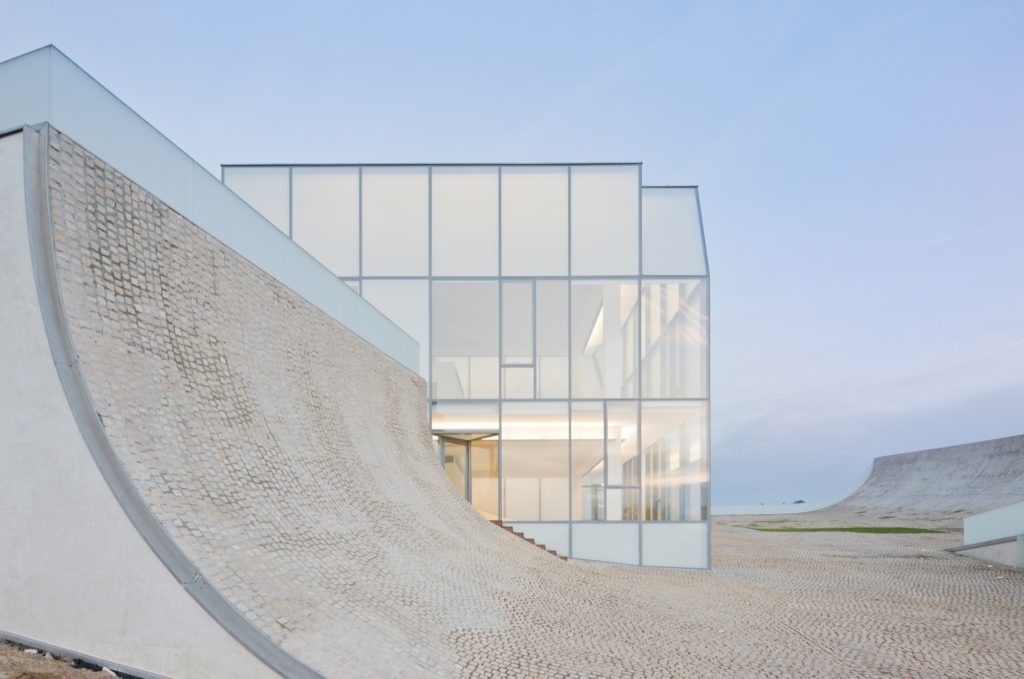
Photos by Iwan Baan; via Steven Holl Architects.
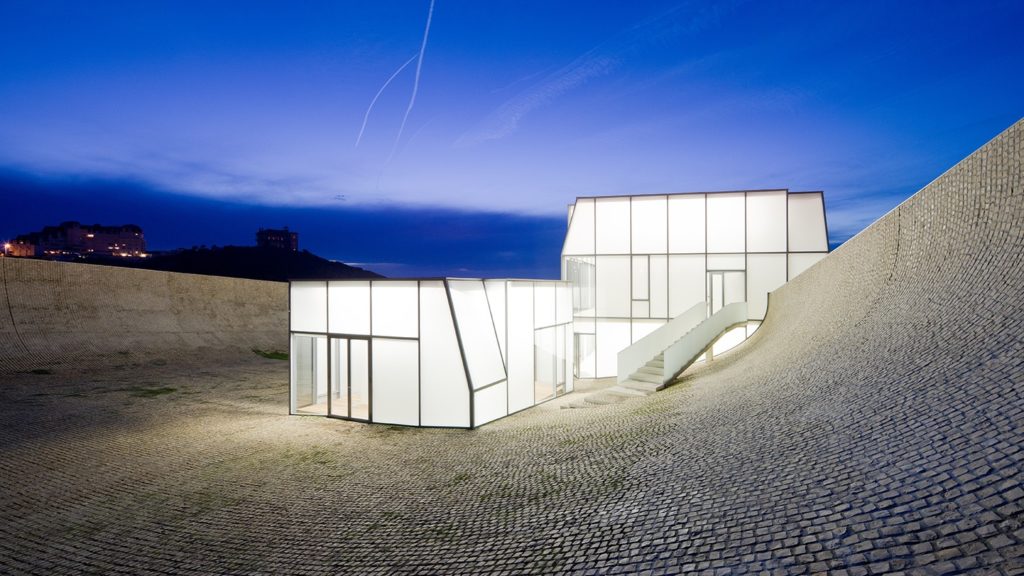
The Cité de l’Océan et du Surf by Steven Holl Architects, Biarritz, France
Translucent glass by Okalux
The Cité de l’Océan et du Surf, or the Museum of Ocean and Surf, is an institute dedicated to “raising awareness of oceanic issues” and examining the ocean’s influence “upon leisure, science and ecology.” The architecture, taking its cues from the nearby beachfront, is structured as an artificial landscape of natural stone and acid etched glazing.
Visitors approach the museum across a cobblestoned plaza whose edges rise up like waves to create voluminous exhibition spaces below. These waves of stone seem to crash around two “glass boulders” at the center of the plaza which contain a public café and surfer’s kiosk. At night, their translucent façades are backlit, giving them an apparent solidity. During the day, capillary insulation in the glazing diffuses light deep into the subterranean galleries.
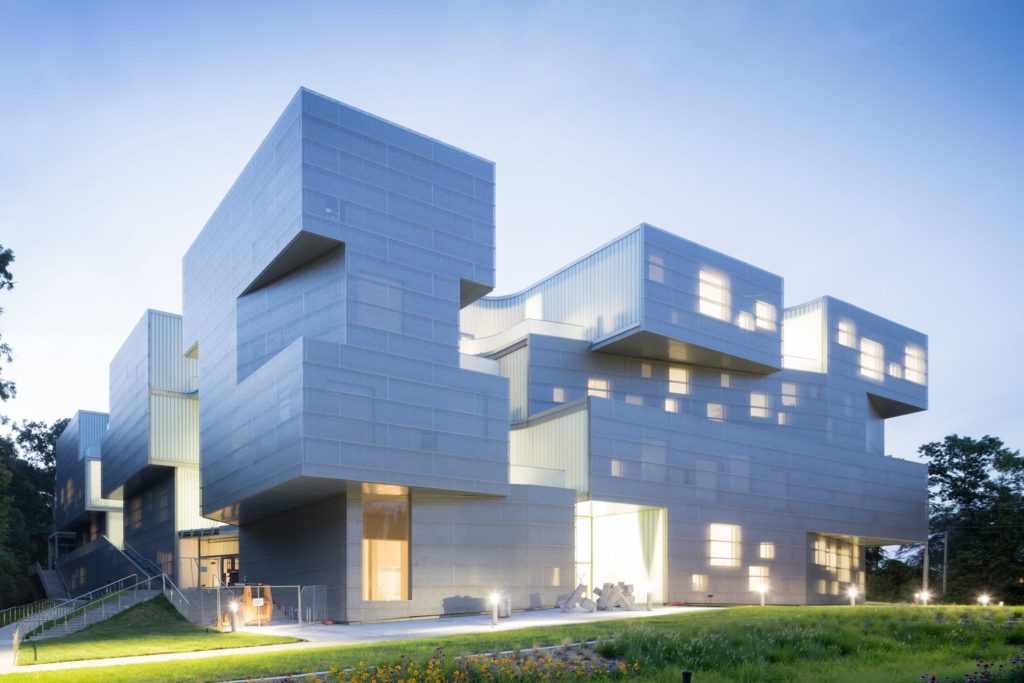
Photos by Iwan Baan; via Steven Holl Architects.
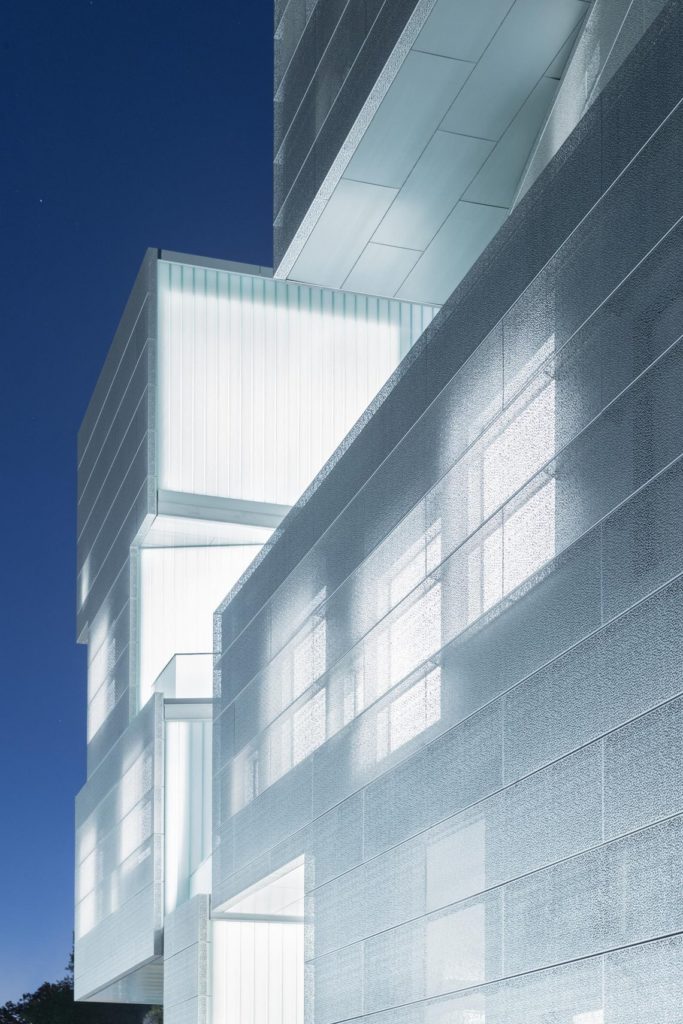
Visual Arts Building at the University of Iowa by Steven Holl Architects, Iowa City, Iowa, United States
Translucent glass by Bendheim and Wacotech
The new home of the University of Iowa’s School of Art brings together students of all art forms — “from ancient metalsmithing techniques to the most advanced virtual reality technologies” — together in one multidisciplinary facility. The building, modeled after the cubist paintings of Pablo Picasso, has been carved into a series of blocks and voids, creating studio spaces with optimal light conditions for each discipline.
The outward façades are clad in zinc panels and feature windows of both clear and translucent glass, depending on the type of artwork being created within. The inner façades are finished in planks of roughcast channel glass, infilled with light-diffusing glass fiber insulation. A screen of perforated stainless steel wraps around the exterior, modulating the intake of natural light while further complicating the play of transparencies and opacities.
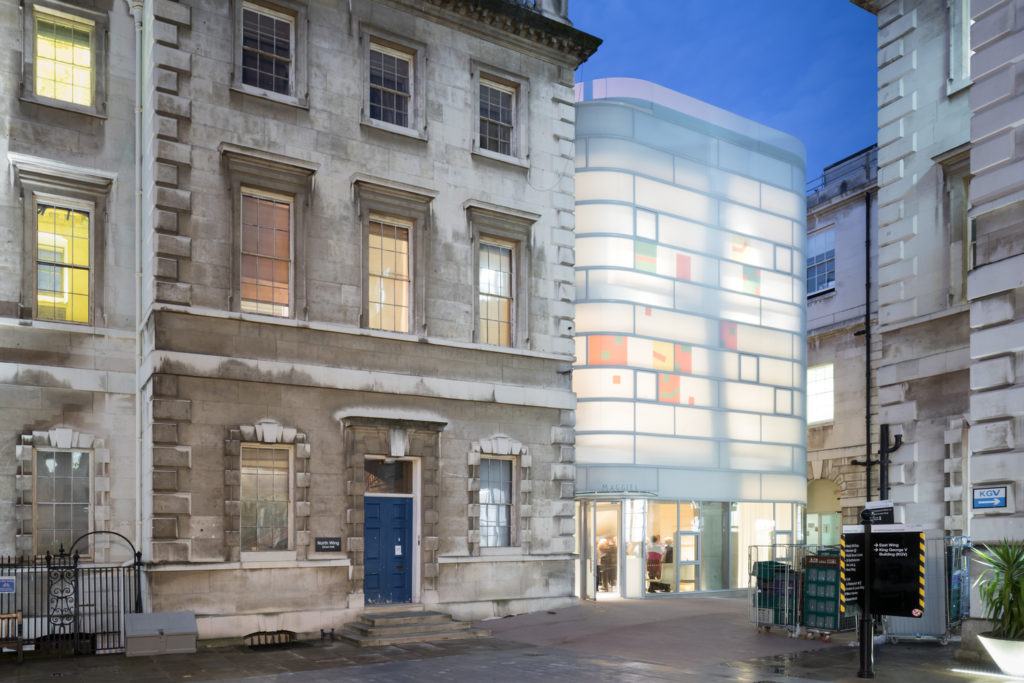
Photos by Iwan Baan; via Steven Holl Architects.
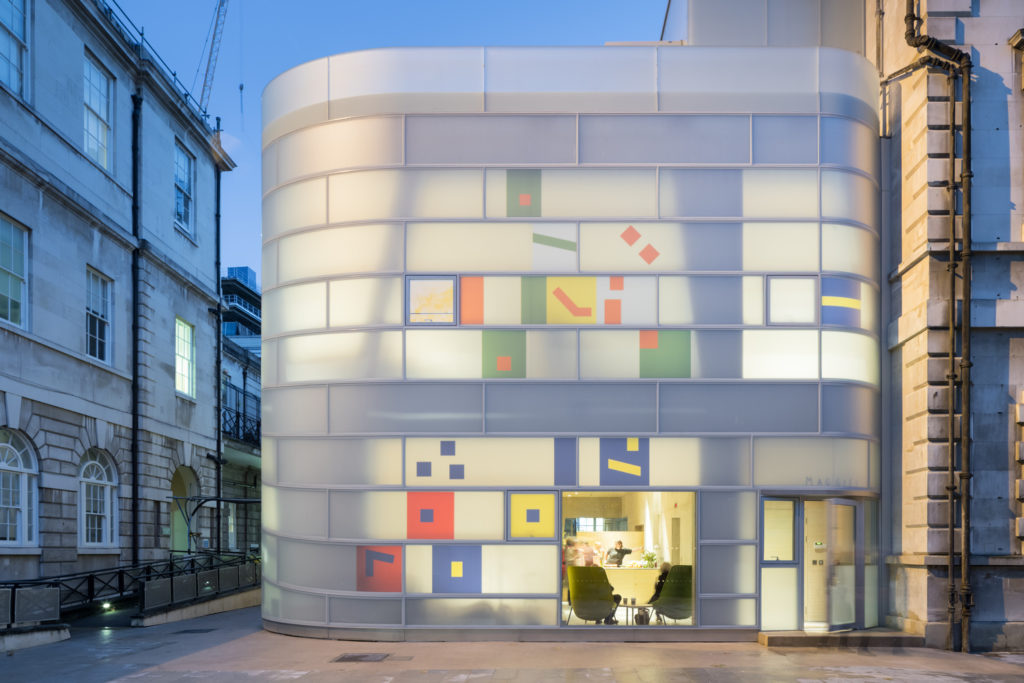
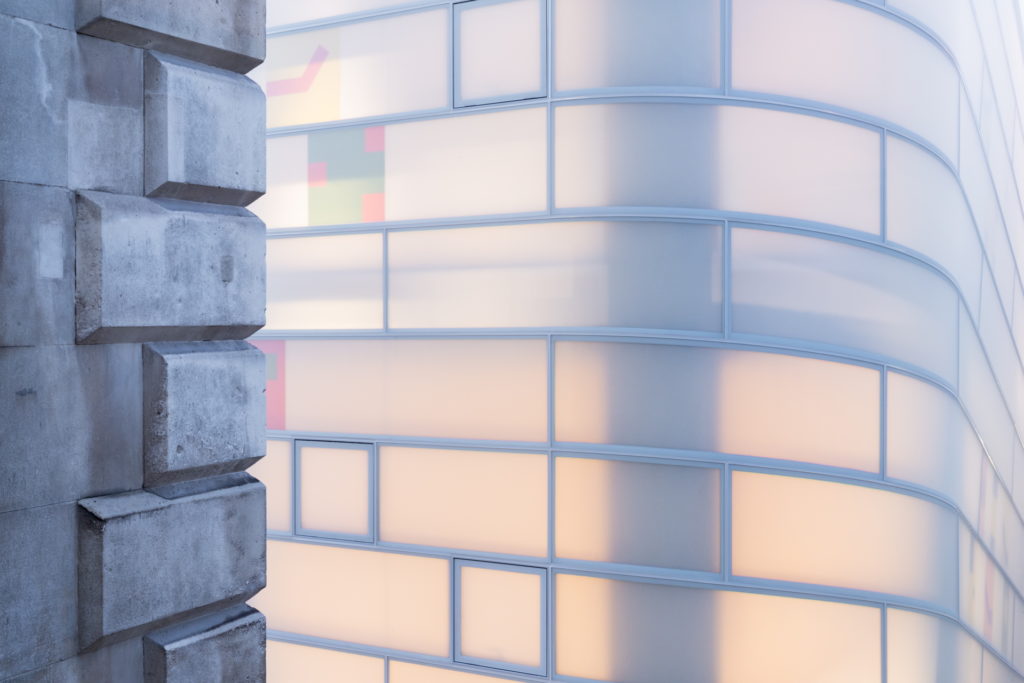
Maggie’s Centre Barts by Steven Holl Architects, London, United Kingdom
Translucent glass by Okalux
Maggie’s Centre Barts, located on the grounds of St. Bartholomew’s Hospital in London, is the latest in a global network of starchitect-designed facilities providing free emotional support to cancer patients. The façade, inspired by its historic surroundings, is organized like a medieval musical score with horizontal bands of white glass punctuated by rhythmic patches of color. As the architects describe, these “colored lenses together with the translucent glass… present a new, joyful, glowing presence on the corner of the great square.”
To produce this effect, Steven Holl collaborated with Okalux to develop a new type of glazing, known as polychrome insulating glass. Each panel consists of layers of colored film, laminated between two sheets of capillary insulation which, in turn, are sandwiched between panes of acid etched glass. Like the stained glass windows of a gothic cathedral, these colorful panels dissolve light into a soft glow, creating a welcoming atmosphere for patients and their families.
Search for the best glazing through Architizer’s new community marketplace for building-products. Click here to sign up now. Are you a glazing manufacturer looking to connect with architects? Click here.
The post The Ethereal Glass Façades of Steven Holl Architects appeared first on Journal.
, Jon Cornachio, read more Journal http://bit.ly/2qJKHQ9
Yorumlar
Yorum Gönder